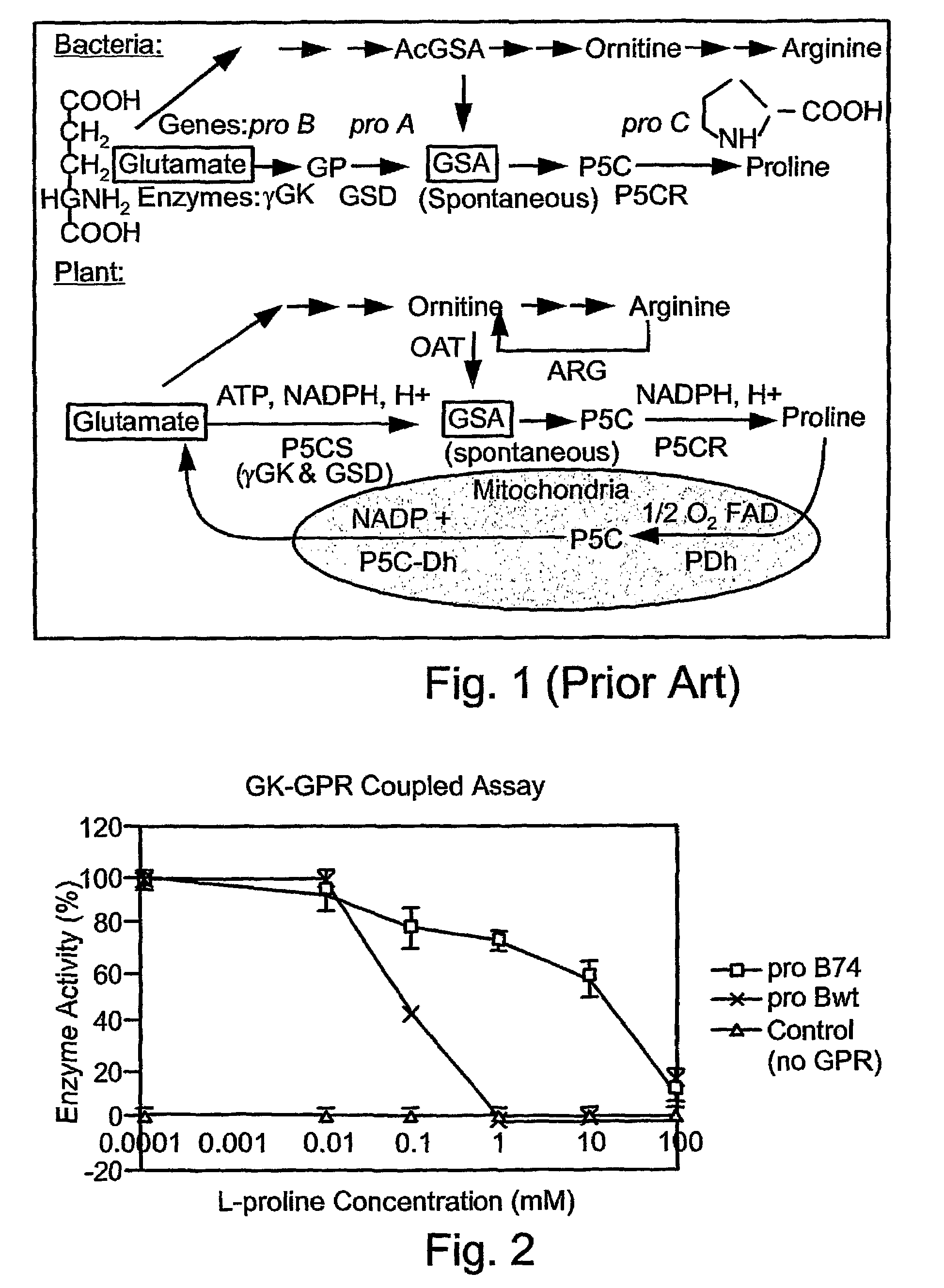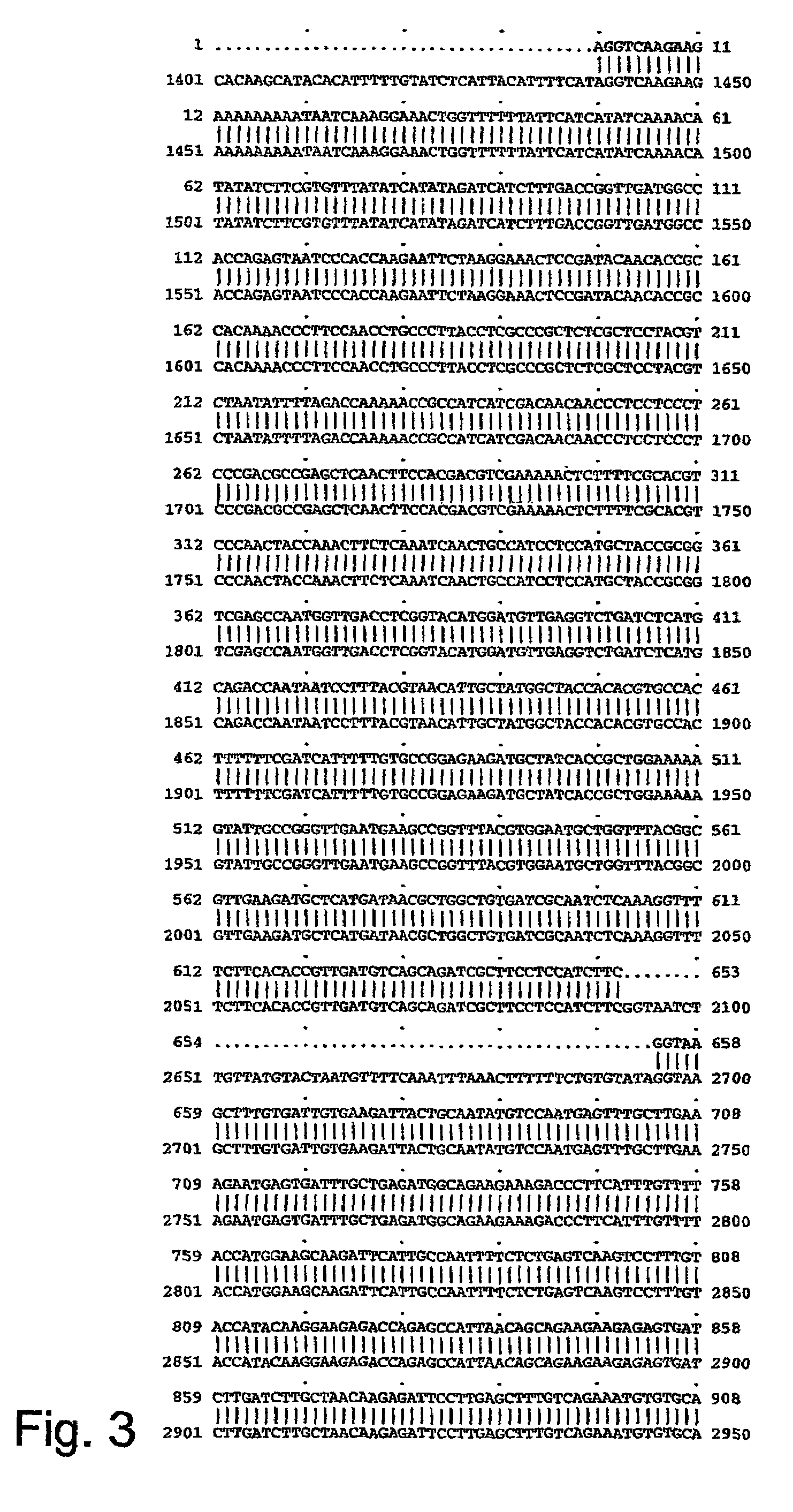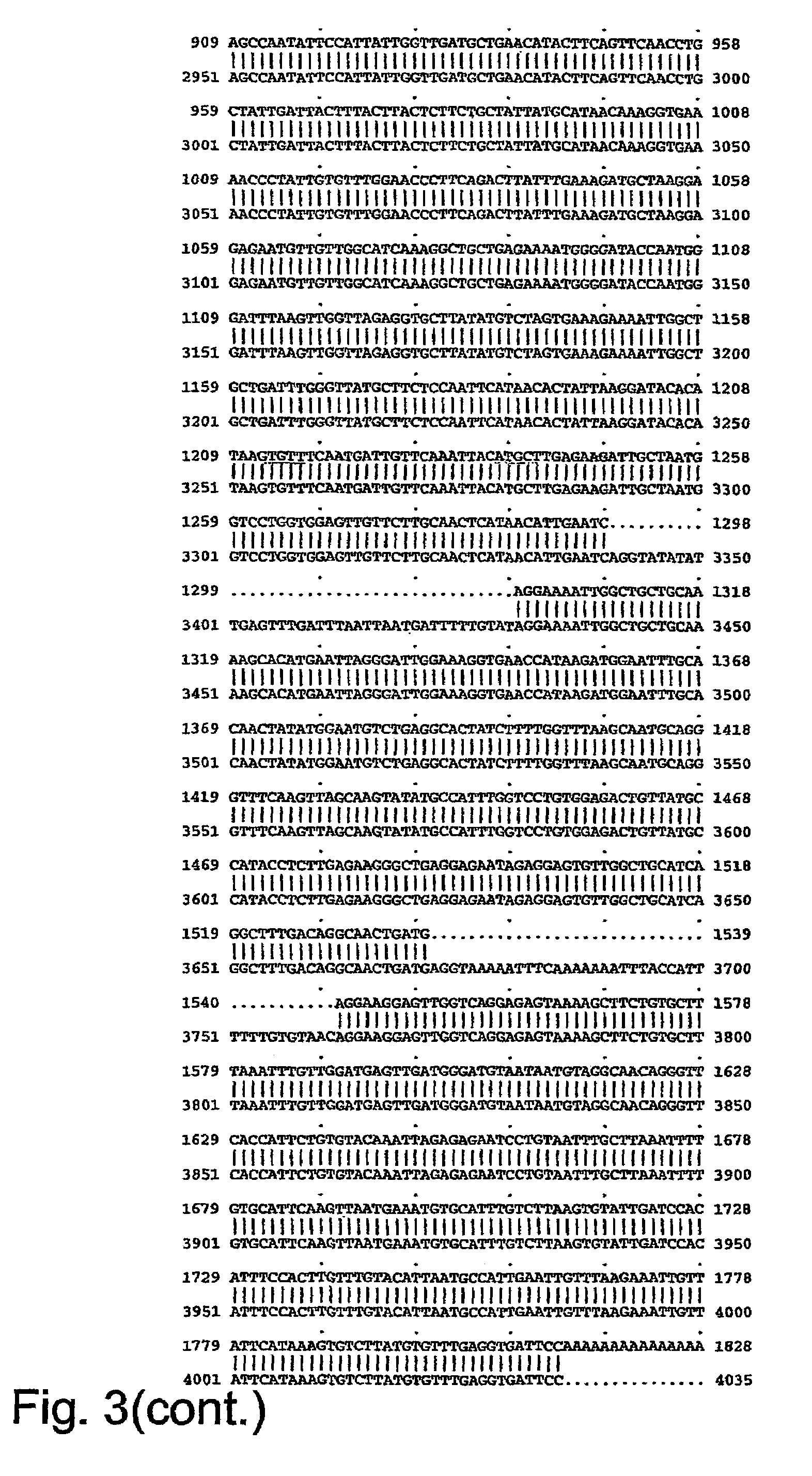Plants tolerant of environmental stress conditions, methods of generating same and novel polynucleotide sequence utilized thereby
a technology of environmental stress and polynucleotide sequence, applied in the field of plants tolerant of environmental stress conditions, methods of generating same and novel polynucleotide sequence utilized thereby, can solve the problems of plant growth and/or yield, lack of available water molecules, and osmotic stress in the plan
- Summary
- Abstract
- Description
- Claims
- Application Information
AI Technical Summary
Benefits of technology
Problems solved by technology
Method used
Image
Examples
example 1
Characterization of the Proline Insensitive Enzyme GK74
[0233]A bacterial protein biosynthesis enzyme, termed GK74 (proB74 gene product), was evaluated as to the capacity to maintain its enzymatic activity in the presence of GPR and high proline concentrations as compared to a plant derived GK enzyme. The assay was carried out by over-expressing either plant GK (encoded by proBwt GeneBank Accession No. X00786) or bacterial GK74 encoded by proB74 (Csonka et al., 1988) along with GPR (GSD) in E. coli and performing GK-GPR coupled assays in vitro (FIG. 2). The results of these assays show that GK74 is indeed two order of magnitude less sensitive to proline as compared to the plant wild type GK. Consequently, the proline indifferent GK74 was considered as a good candidate for generating plants with high proline level.
[0234]There are several other advantages to using GK74 (proB74) instead of the plant GK (proBwt) gene. The bacterial genes are not co-suppressed by chromosomal homologues in...
example 2
A Novelfull Length Gene and the Corresponding cDNA Encoding PDh in Alfalfa
[0236]Amplification and Sequence Analysis of the Alfalfa PDh cDNA: Two different full-length PDh cDNAs were amplified as described above in the materials and methods section. The amplified PDh cDNAs were cloned and sequenced. Multiple alignment of both sequences and that of the PDh led to the elimination of mismatches between the two sequences resulting from point mutations introduced by the Reverse Transcriptase during cDNA synthesis, Taq polymerase substitution during PCR amplification or sequencing mistakes. The alfalfa PDh cDNA sequence (SEQ ID NO:4) exhibited 57% identity with the Arabidopsis PDh (Kiyosue et, al. 1996) at the DNA level. The translated protein sequence (SEQ ID NO:5) of the alfalfa PDh cDNA sequence displayed a 56% identity and 65% similarity with the Arabidopsis PDh protein sequence.
[0237]Amplification and Sequence Analysis of the Alfalfa PDh Gene: A 2.6 Kb amplified fragment representing ...
example 3
Generation of Transgenic Tobacco Plants Expressing the E. coli proB74 and proA Genes and the Alfala PDh Anti-Sense Fragment, Driven by Constitutive Promoters
[0241]Two sets of plant vectors were constructed in order to target the GK74 and GPR either to the cytoplasm or to the chloroplasts of the transformed plants.
[0242]To target the proteins into the chloroplast, the proB74 and proA coding regions which encode the proline biosynthesis enzyme complex in bacteria were translationally fused downstream to the 5′ sequence of pea rbcS, encoding the chloroplast targeting transit peptide of the RUBISCO small subunit. Both genes, with or without the sequence of the transit peptide, were cloned downstream to the CaMV 35S promoter including the TMV omega sequence (FIGS. 6a-g).
[0243]The proB74 cassettes with or without the rbcS transit peptide sequence were inserted into the pGIF Agrobacterium-plant shuttle vector (FIGS. 6a, c, f and g). The pGIF vector carries the hph gene linked to the nos pr...
PUM
| Property | Measurement | Unit |
|---|---|---|
| length | aaaaa | aaaaa |
| pH | aaaaa | aaaaa |
| nucleic acid | aaaaa | aaaaa |
Abstract
Description
Claims
Application Information
 Login to View More
Login to View More - R&D
- Intellectual Property
- Life Sciences
- Materials
- Tech Scout
- Unparalleled Data Quality
- Higher Quality Content
- 60% Fewer Hallucinations
Browse by: Latest US Patents, China's latest patents, Technical Efficacy Thesaurus, Application Domain, Technology Topic, Popular Technical Reports.
© 2025 PatSnap. All rights reserved.Legal|Privacy policy|Modern Slavery Act Transparency Statement|Sitemap|About US| Contact US: help@patsnap.com



